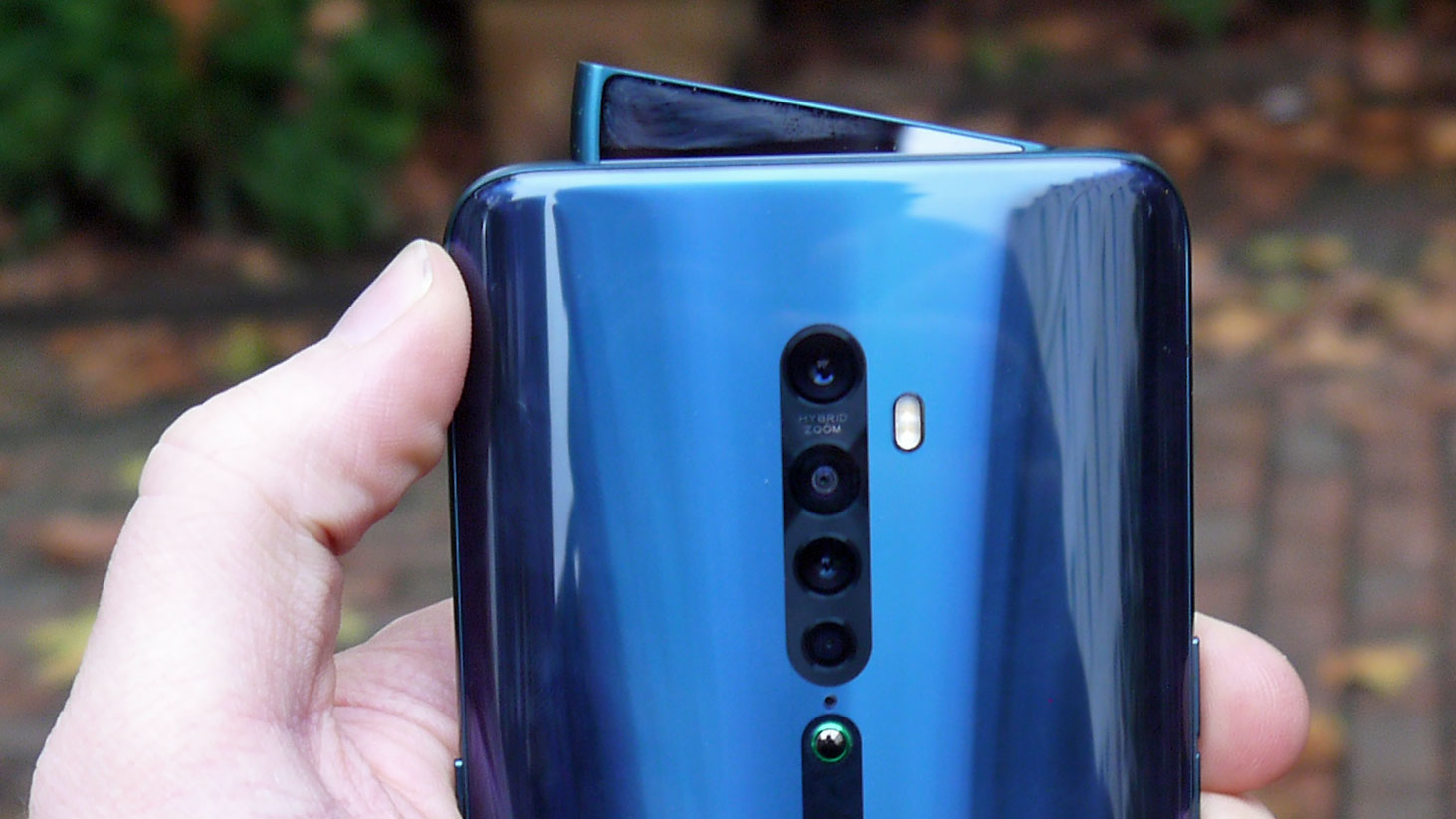TechRadar Verdict
The Oppo Reno 2 is a decent mid-range device, offering some of the best features of the Reno range at a competitive price. However it’s not got the processing power or camera skills of some previous Oppo phones, and it doesn’t change the Reno formula in any big way.
Pros
- +
Decent camera capabilities
- +
Great-looking design
- +
Snappy charging
Cons
- -
Battery life feels a touch lacking
- -
Mediocre processing power
Why you can trust TechRadar
After launching the Oppo Reno series of smartphones in June 2019, comprising the Oppo Reno, Oppo Reno 10x Zoom (and later the Oppo Reno Z affordable device), it only took Oppo four months to follow them up with the Oppo Reno 2 series, consisting of the main device and the Oppo Reno 2Z.
The new devices aren’t upgrades on the four-month-old devices per se; instead they’re new entries to the Reno line-up that sit alongside the older phones, but at different price points.
So, you may be wondering, what’s the difference between the Oppo Reno 2 and the Reno 2Z? Well, barely anything really – this review is of the Reno 2, but we’ve also tested the 2Z alongside it, so where phones differ we’ll point that out.
Oppo Reno 2 price and availability
The Oppo Reno 2 costs £449 (around $575, AU$850), and the more affordable Reno 2Z is available from £329 (roughly $420, AU$630).
In comparison, the Reno 10x Zoom price was £699 / AU$1,199 (about $889), while the Reno cost the same as the Reno 2 and the Reno Z launched at £299 / AU$499. We've been told the Reno 2 is replacing the Reno, so the new devices sit snugly between the Z and 10x Zoom.
You can pick up the Oppo Reno 2 and Reno 2Z from October 18, where they'll be available all over Europe, following a Chinese launch earlier in 2019.
Design
If you’ve seen the Oppo Reno or Reno 10x Zoom, you know almost exactly what the Oppo Reno 2 looks like, as there are very few changes. That’s not necessarily a bad thing though – those handsets are good-looking phones, although after seeing several similar-looking handsets the novelty is starting to wear off a little.
The key feature of the Oppo Reno 2 design-wise is its pop-up camera, housed in a ‘shark-fin’ segment that rises from the top of the phone. It’s certainly a novel solution to the problem of how to incorporate a front-facing camera in an all-screen handset without taking up valuable screen space (and good-novel, not bad-novel like the Samsung Galaxy A80). It’s pretty sturdy too, with drop detection built in so that the phone retracts the camera when it senses that it’s falling.

The Oppo Reno 2Z doesn’t have the shark-fin segment, and instead has a ‘standard’ (although this design is itself still fairly novel) pop-up rectangle like several other recent smartphones. It feels just as durable as the shark-fin.
The Oppo Reno 2 has the same rear design as the previous Reno phones, so instead of having a camera bump that sticks out, the cameras are nestled in the Gorilla Glass back, and the rear is smooth – smooth, that is, save for the O-Dot, a small bump on the back that protects the lenses from being scratched when you lay the phone down flat.
The volume rocker is on the left of the phone and the power button on the right, with a USB-C port and 3.5mm headphone jack on the bottom of the device. The Oppo Reno 10x Zoom doesn’t have the headphone port, so it’s a welcome inclusion here if you like to use wired headphones for gaming or watching movies.

We don’t have the official dimensions of the Oppo Reno 2, but judging by its screen size it’s about halfway between the Reno and Reno 10x Zoom. That means it’s comfortable to use for people with large hands, although those with smaller hands may need to stretch to reach things now and then. It’s also a relatively heavy device compared to other smartphones, which is noticeable if you’re using it for long periods of time.
Display
The Oppo Reno 2 display is a 6.5-inch AMOLED screen, sitting between the Oppo Reno’s 6.4 inches and the Reno 10x Zoom at 6.6 inches. It’s got the same screen quality as both handsets though – except for one tiny difference.

That difference is the aspect ratio. While the first-gen Reno devices have 19:9 aspect ratios, the Reno 2 is 20:9, so it’s slightly taller. Because of this, while both handsets have 401 pixels per inch, the Reno 2 has a resolution of 1080 x 2400, over the 1080 x 2340 of the Reno.
What does this mean in terms of viewing difference? Very little. But again, being little different to a very capable phone is fine with us, and the Oppo Reno 2 has a good-looking screen.
Max brightness is high, colors are bold, and quality is overall pretty good. It’s not the 4K screen of the Sony Xperia 1, but while it’s nice to have a display of such high quality, few people will miss not having it.
Thanks to the pop-up front camera the screen isn’t broken up at any point by a notch or ‘punch-hole’, so the Oppo Reno 2 is a good device on which to stream media or play games without a pesky lens encroaching on the picture.

Tom Bedford joined TechRadar in early 2019 as a staff writer, and left the team as deputy phones editor in late 2022 to work for entertainment site (and TR sister-site) What To Watch. He continues to contribute on a freelance basis for several sections including phones, audio and fitness.
